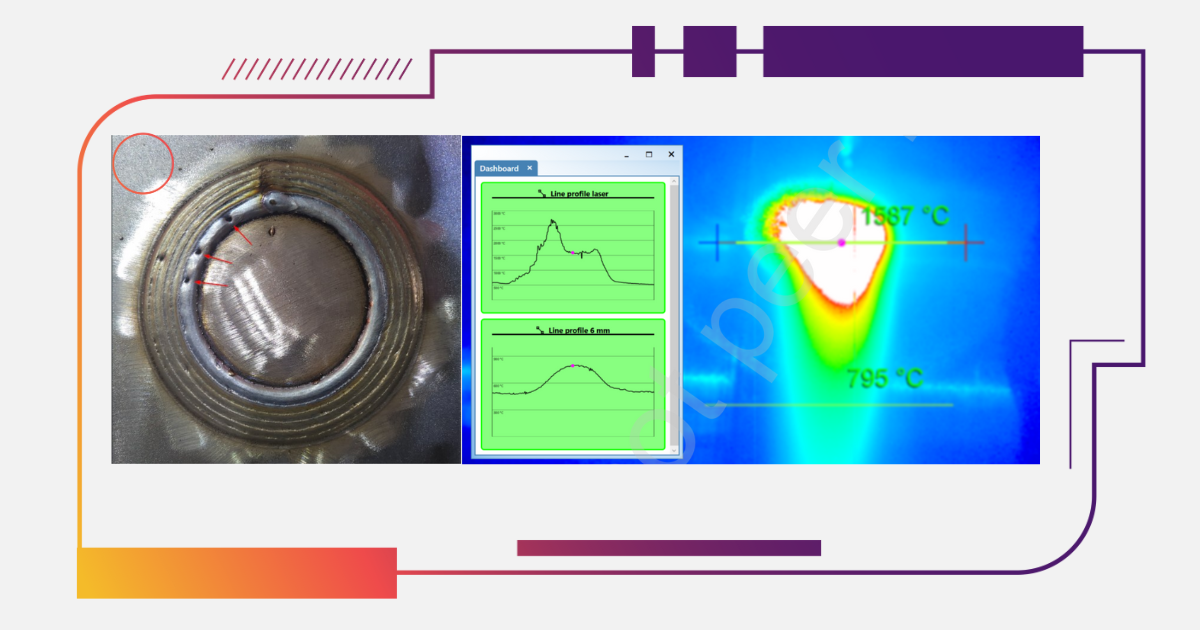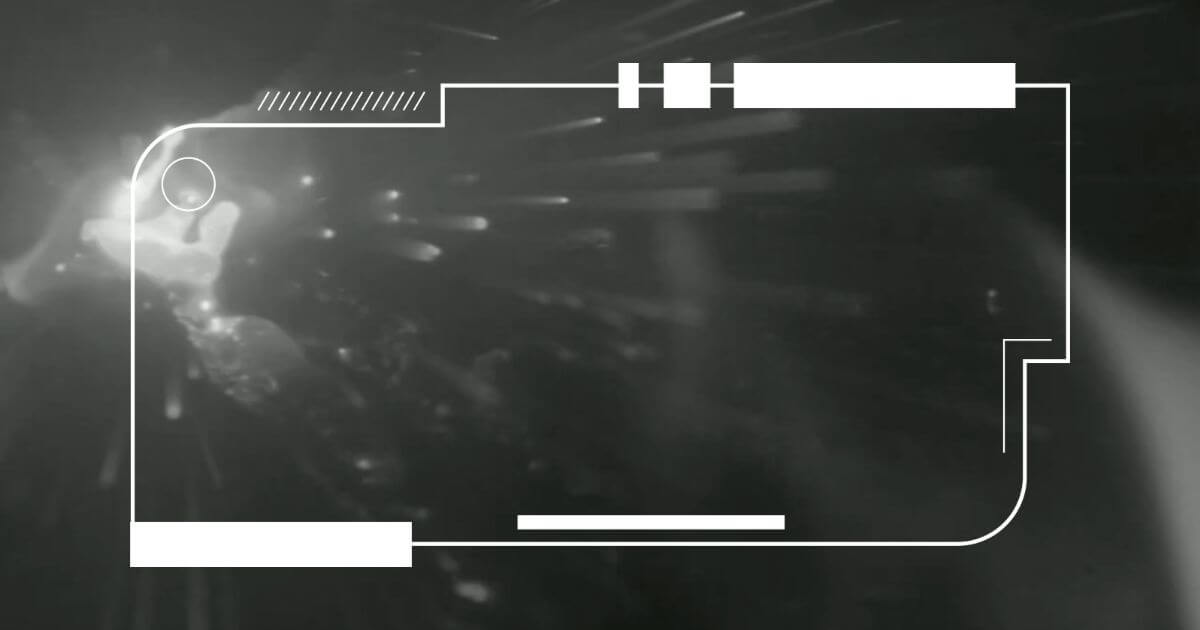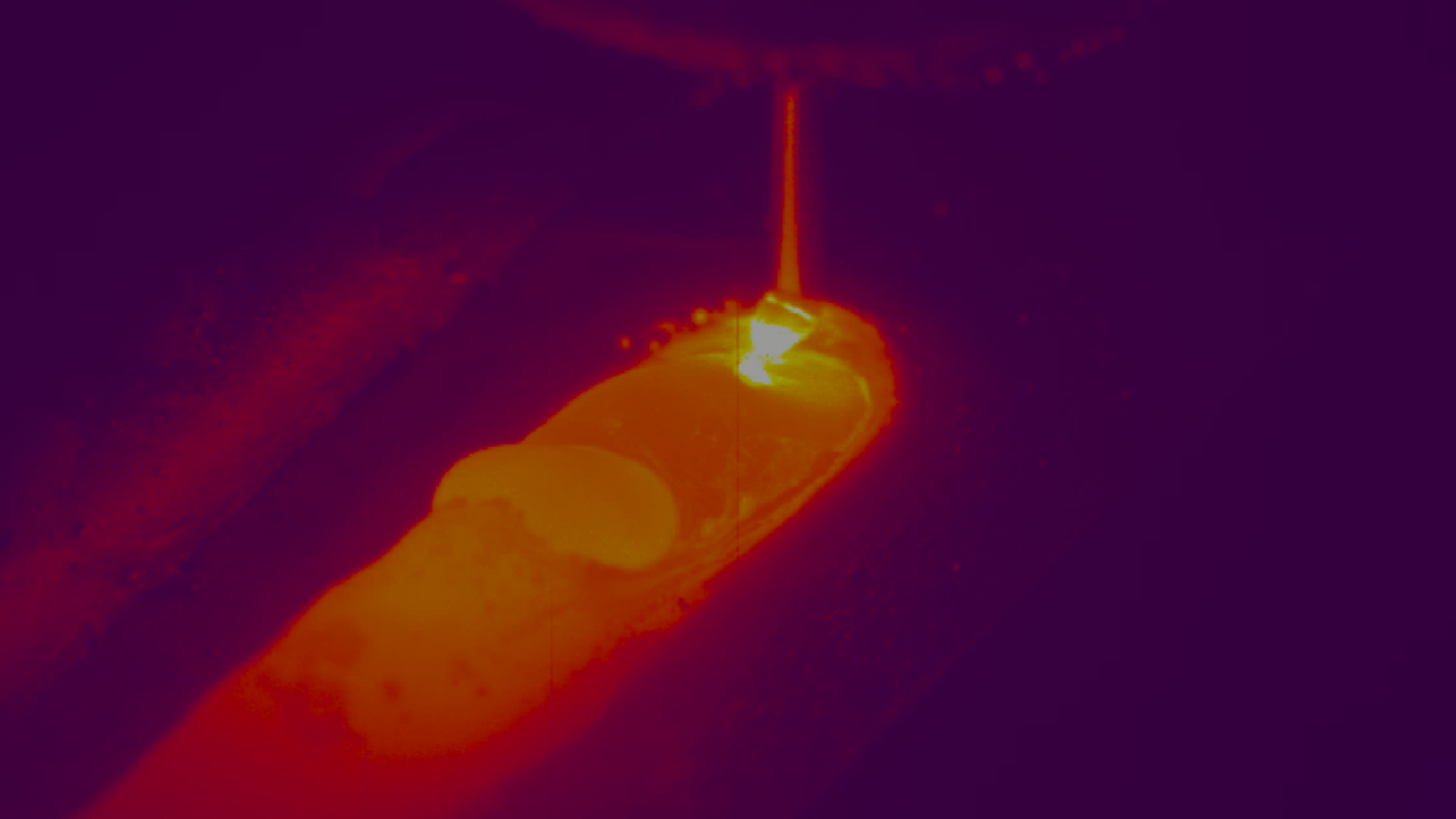Welding and Directed Energy Deposition (DED) additive manufacturing relies on precise heating and cooling cycles to produce strong, and defect-free components.
But what happens when cooling isn’t controlled properly?
If a weld cools too fast, it becomes brittle (martensite). If it cools too slowly, it forms a tougher, more durable structure (pearlite or bainite). Balancing cooling time is critical but difficult to achieve.
Unlike casting or forging, where heat is applied uniformly, welding and additive manufacturing only heat specific areas, creating localized temperature gradients. Variations in cooling rates impact hardness, strength, and toughness. Excessive heat accumulation in AM can lead to defects preventing the material from retaining its intended shape and directly influencing the material properties.
Traditional temperature measurement tools, like thermocouples and pyrometers, provide limited insights into the full thermal profile of a weld or additive layer. Given the complexity of heat management in welding, thermal monitoring plays a crucial role in achieving process control and ensuring the desired material characteristics.
In our on-demand webinar, industry experts Prof. Patricio Mendez (University of Alberta) and Dr. Dmytro Havrylov (Xiris) discuss how real-time thermal monitoring is transforming welding and additive manufacturing. They highlight the Xiris XIR-1800 Thermal Camera and the Cooling Time Tool, which provide real-time cooling rate data, making it easier to predict material properties and optimize welding processes.
This article highlights a few key insights from our webinar experts—watch the full session to explore these topics in more detail.

Figure: t8/5 Cooling Time to Metallurgical Transformations
How Can We Determine an Acceptable t8/5 Range for Welding?
The t8/5 cooling time (800°C to 500°C) is a critical parameter for predicting material behavior and ensuring process control. The t8/5 provides insight into expected microstructural changes. However, even without prior data, measuring t8/5 across successful welds ensures process consistency and quality assurance. The XIR-1800 and Cooling Time Tool provide the ability to monitor the t8/5 cooling time at every moment of welding and DED, ensuring an absence of hard spots or softened-based metal with reduced strength.
The ideal cooling time considered both metallurgical and mechanical properties. Metallurgically, cooling rates affect hardness, toughness, and strength, while mechanically, it influences distortion and weld integrity. Cooling rates can be adjusted via travel speed, wire feed speed, voltage, and in the case of laser process- laser power.
How Does Travel Speed Impact Cooling Rate Measurements?
The Xiris Cooling Time Tool is optimized for straight-line motion, as accurate travel speed calculations require continuous data collection over several frames, as challenges such as spatter, and flying particles may interfere with measurements. In the case of rapid travel direction changes like in robotic welding, the travel speed can be set up manually or post-processing analysis can be applied to record raw images to calculate cooling times for each segment.
In traditional welding, heat input is controlled via parameters like current, voltage, wire feed rate, and travel speed (or laser power and travel speed for laser welding). However, in DED additive manufacturing, pre-heating temperature between the layers adds to the complexity. For this reason, traditional formulas have limited use, and the direct measurement of cooling rates remains the most effective method to ensure optimal material performance.
Can Cooling Time Be Measured Beyond t8/5?
Yes, the Cooling Time Tool allows users to set custom temperature thresholds, for example, t12/8— cooling time between 1200 and 800 °C, expanding beyond the t8/5 range. For weld pool analysis, in addition to the Cooling Time Tool, additional tools such as MeltPool AI and AI Classification can provide geometric insights based on melt pool images. These tools integrate seamlessly with the XIR-1800 thermal camera for a comprehensive understanding of thermal and geometric analysis.
How Can Pixel-to-Millimeter Conversion Be Calibrated in Thermal Cameras?
WeldStudio offers a built-in calibration tool for converting pixel measurements to millimeters, helping correlate image distances with real-world measurements. However, factors like camera placement, viewing angle, and field of view significantly impact accuracy. However, for the Cooling Time Tool, direct millimeter calibration isn’t necessary—it calculates the cooling time in seconds based on pixel-based measurements, making it adaptable across various setups.
How Does Emissivity Affect Cooling Time and Thermal Imaging?
Emissivity, the efficiency with which a material emits infrared radiation, plays a crucial role in thermal imaging accuracy. The XIR-1800 SWIR thermal camera offers an advantage over mid-wave and long-wave IR cameras, being less sensitive to emissivity variations. However, material properties, oxidation, material type, and temperature still affect emissivity values. WeldStudioPro software allows users to define multiple emissivity regions to improve measurement precision.
In additive manufacturing, emissivity can change due to viewing angle, oxidation, and surface conditions, affecting temperature readings. Since no universal correction method exists, adjustments may be process specific. Xiris Automation is happy to assist our customers with their setup using our expertise, knowledge, and experience in this field.
What’s the Best Camera Mounting Position for Monitoring Cooling Time?
For additive manufacturing, a side view is ideal for capturing heat penetration through deposited layers, while welding applications may require different angles depending on joint configuration (e.g., butt welds or T-joints). Adjusting camera orientation ensures precise thermal data capture and optimized cooling rate measurements. The XIR-1800 thermal camera offers versatility in mounting, allowing adjustments based on the welding or additive process being monitored.
Overview of t8/5 Cooling Time Measurement using WeldStudioPro - Courtesy: Xiris Automation
How Can Real-Time Thermal Data Improve Process Optimization?
The WeldStudioPro dashboard visualizes cooling time and temperature distribution across welds and additive passes. Users can track uniformity, detect deviations, and export data for process optimization. Thermal data can also be integrated into OEM control systems, allowing manufacturers to automate parameter adjustments and maintain consistent weld quality.
How Does Previous Layer Temperature Influence WAAM Processes?
In Wire Arc Additive Manufacturing (WAAM), the previous layer's temperature significantly affects the final material properties. Even with constant process parameters like voltage, current, and wire feed speed, cooling rates vary due to heat accumulation and inter-pass temperature differences. Heat accumulation leads to slower cooling and softer microstructures, whereas a cold previous layer results in faster cooling and increased hardness. Cooling Rate Mapping ensures mechanical property compliance; while preheating or controlled cooling strategies help maintain consistent interlayer temperatures.
Can the XIR-1800 Thermal Camera Be Used in Laser DED Systems?
Yes, the XIR-1800 camera can be integrated through laser welding optics for coaxial thermal monitoring. However, laser systems often have a narrow field of view (FoV), limiting broader temperature measurements. Some infrared filters in laser heads may obstruct thermal readings, requiring custom filter adjustments for accurate imaging. A side view may offer better insights into cooling trends beyond the melt pool. The coaxial view has its benefits, but we found that the restriction of the field of view by the optical channel limits the potential of the temperature measurements with XIR-1800 in laser welding, cladding, and powder DED.
Can the Temperature Data Be Accessed Online for Process Control?
Yes, the WeldStudio software supports real-time data access for process control using the OPC-UA protocol. This allows seamless integration with automation systems, PLCs, and other monitoring software. Data from all the tools can be exported via OPC-UA, enabling continuous process monitoring and parameter adjustments for improved weld quality.
Can we run your software on Linux?
Yes, Xiris WeldStudio Pro has a Linux version and can be run seamlessly on this operating system.
What You’ll Learn and Why You Should Watch the Full Webinar?
This blog offers just a glimpse of the expert insights shared in our webinar. In the full session, you’ll discover:
- How cooling time impacts weld strength and toughness, and why controlling it is essential
- Live demonstration on how to use the cooling time tool.
- Case studies showing how thermal monitoring improves weld quality.
- Advanced applications of the XIR-1800 in industrial settings.
Don’t miss out—watch the full webinar here and take your welding expertise to the next level!





.png)


